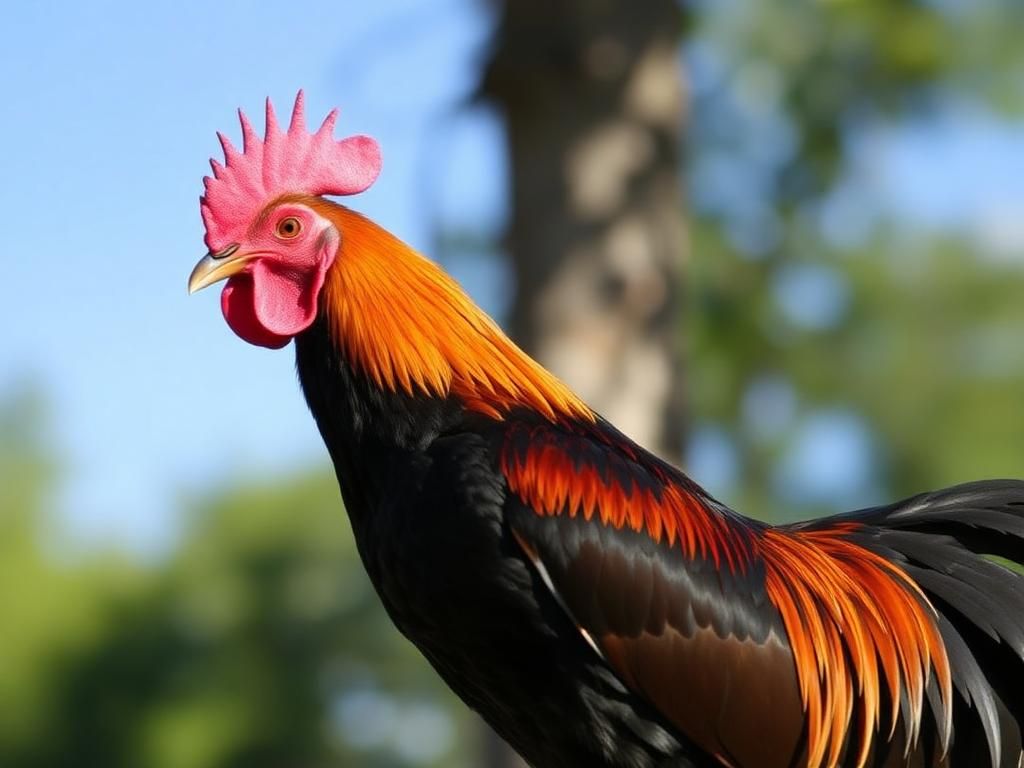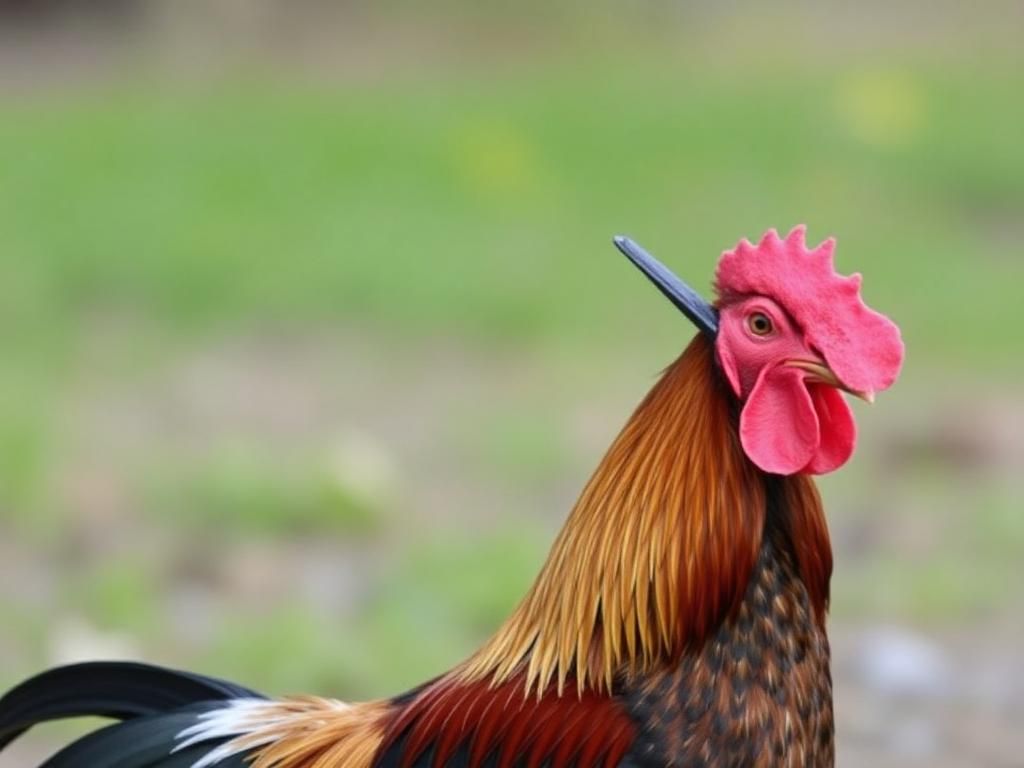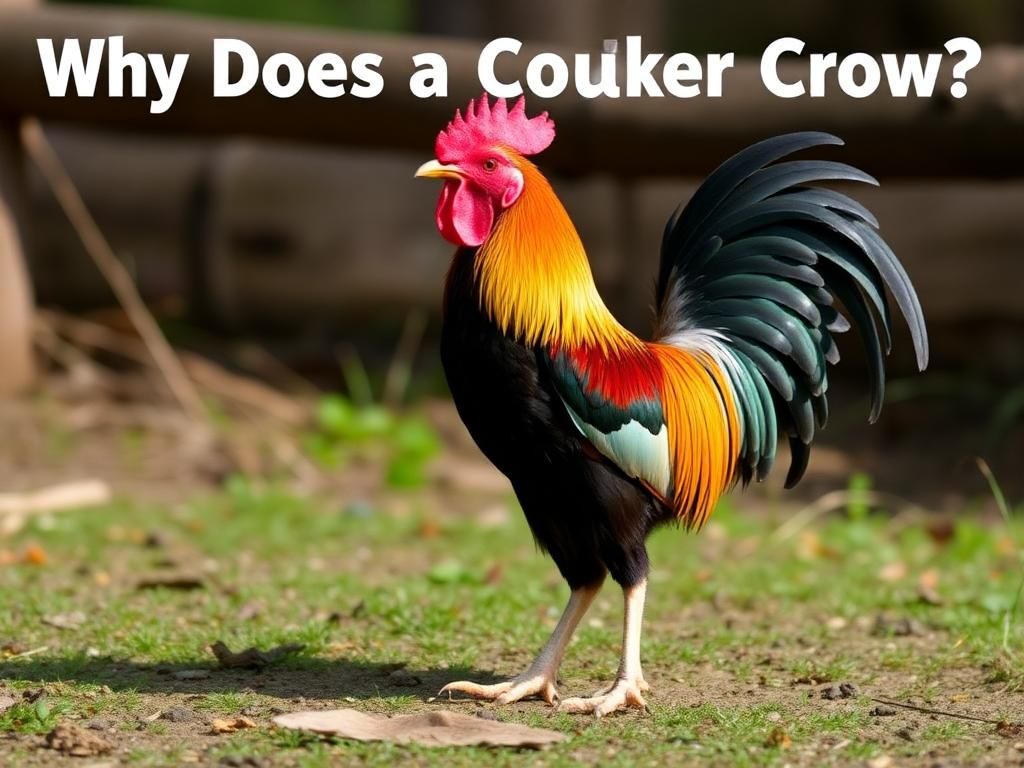In various cultures across the globe, the cockerel, or rooster, holds a significant place, often regarded as a symbol of dawn, vigilance, and even fertility. These birds are woven into the fabric of folklore, art, and traditions, revered and recognized for their distinctive vocalizations. Often, the age-old question arises: why does a cockerel crow? Understanding their behavior not only enriches our appreciation for these magnificent birds but also impacts farming and agriculture practices.
Understanding the Cockerel’s Natural Behavior
What is a Cockerel?
A cockerel, commonly known as a rooster, is the male counterpart of the chicken. Characterized by its vibrant plumage, distinct comb (the fleshy crest on its head), and often, elaborate tail feathers, the cockerel plays a pivotal role in a flock’s social structure. Unlike hens, which are typically more subdued and lack certain secondary sexual characteristics, cockerels are known for their assertive behavior and vocalizations.
The Anatomy of Crowing
Crowing is a remarkable display of avian vocalization that primarily utilizes the syrinx, the unique vocal organ found in birds. The syrinx is located at the base of a bird’s trachea and functions to produce a wide variety of sounds. For cockerels, this organ allows them to create their distinctive and commanding crows, which can carry over vast distances. The shape and operation of the syrinx, combined with the cockerel’s anatomy, contribute to the unique pitch and tone of their calls.
Reasons for Crowing
Communication and Territory
One fundamental reason for crowing is communication, particularly in establishing territory. Cockerels use their crows to mark boundaries and warn other males of their presence. This vocal expression is vital in deterring rivals and maintaining social order within the flock. Additionally, cockerel vocalizations serve as social signals to hens and other cockerels, reinforcing the flock’s dynamics.
Mating Calls
Crowing also plays a significant role in mating rituals. The cockerel’s crow is not just a call; it’s a display of health and dominance, showcasing their strength through vocal prowess. A louder and more frequent crow often attracts hens, reinforcing the cockerel’s role as a viable mate. This behavior underscores the importance of crowing in reproductive success and genetic propagation within avian species.
Response to Environmental Cues
Environmental factors heavily influence a cockerel’s crowing behavior. The most notable among these is the relationship between light and circadian rhythms. As dawn breaks, the increase in light signals to the cockerel that it is time to crow. Additionally, changes in weather conditions, the presence of predators, or other environmental stimuli can trigger crowing at varying times throughout the day. This adaptability highlights the cockerel’s innate ability to respond to changes in their surroundings.

Conditions and Instinctual Behaviors
From a young age, cockerels exhibit instinctual behaviors that dictate their vocal patterns. However, domestication has shaped these natural instincts, leading to variations in crowing behaviors among different breeds. Observations show that some breeds may crow more frequently while others remain comparatively quiet. Understanding these nuances is essential for those in agriculture hoping to manage flock behavior effectively.
The Timing of Crowing
Crowing at Dawn and Throughout the Day
Traditionally, many associate crowing with the break of dawn. This timing is rooted in the biological clocks of cockerels, which align with environmental changes marking day and night. However, as they are not solely diurnal creatures, cockerels may also crow at various points throughout the day. Factors such as disturbances from other animals, feeding times, or even social hierarchy can contribute to unexpected crowing patterns.
Factors Influencing Crowing Frequency
Moreover, individual temperament plays a significant role in how often a cockerel will crow. Some may be naturally more vocal, while others may crow less frequently. Social hierarchies within the flock can further reinforce this behavior, with more dominant cockerels asserting their vocal presence to maintain their status.
Cultural Significance of Cockerel Crowing
Symbolism in Different Cultures
Cockerels have permeated folklore and mythology across various cultures, symbolizing different attributes, such as vigilance and moderation. In Chinese culture, the cockerel is celebrated in the zodiac and is viewed as a harbinger of good fortune. In France, cockerels are regarded as national symbols, representing courage and vigilance, particularly during historical events. This rich cultural significance highlights the impact of cockerel crowing beyond mere animal behavior.
Cockerels and Agricultural Practices
In traditional farming, cockerels are vital for their role in timekeeping, often heralding the dawn and assisting farmers in maintaining a rhythm to agricultural life. Their presence in rural settings also aids in flock management and demonstrates the symbiotic relationship between cockerels and farming practices. In modern agricultural settings, understanding crowing behavior can lead to better breeding programs and enhance overall flock health.

Conclusion
Recapping the multifaceted reasons behind why does a cockerel crow, it becomes clear that crowing serves numerous essential functions, from communication and territory establishment to attracting mates and responding to environmental cues. Appreciating the behavior of cockerels is vital for farmers and wildlife conservationists. Observing these magnificent birds in their natural habitat presents an opportunity to learn and deepen our understanding of their life, providing invaluable insight into animal behavior.
Additional Resources
For more information on animal behavior and cockerel care, explore the following resources:
– Animal Science Association
– USDA Farmers Portal
| Key Aspect | Description | Importance |
|---|---|---|
| Crowing Behavior | Vocal communication among cockerels | Establishes territory and social order |
| Mating Ritual | Crowing as part of attracting mates | Shows health and dominance |
| Environmental Response | Crowing triggered by daylight and weather | Adaptability to surroundings, survival |
| Instinctual Behaviors | Genetic propensity towards vocalization | Influences breed behavior in farming |
FAQs about Cockerel Crowing
1. Why do cockerels crow at dawn specifically?
Cockerels crow at dawn due to their biological clocks, aligning with increasing light levels, which signal that it’s time to wake and establish territory.
2. Do all cockerels crow the same amount?
No, the frequency of crowing can vary greatly among individual cockerels based on temperament and social hierarchy within the flock.
3. Can environmental factors influence crowing?
Yes, changes in light, weather conditions, and the presence of predators can all impact when and how often cockerels crow.
4. Is crowing a sign of health in cockerels?
Vocal strength is often associated with health and vitality; thus, a strong crow can indicate a healthy cockerel.
5. How does domestication affect crowing?
Domestication may lead to variations in instinctual behaviors, including the frequency and nature of crowing among different breeds.
6. What role do cockerels play in farming?
Cockerels help manage flocks by maintaining order and can also serve as natural timekeepers for agricultural routines, especially in traditional farming practices.
7. Are there different types of crowing?
Yes, cockerels may produce a range of vocalizations, including crows, clucks, and other sounds, each serving distinct social functions.
8. How can I encourage healthy crowing behavior in my cockerel?
Providing an optimal environment with a balanced diet, adequate space, and social interaction can help encourage healthy vocalizations.
9. What do different crowing patterns indicate?
Different crowing patterns can denote specific social interactions or environmental cues. Observing these can give insights into the flock dynamics.
10. Can crowing be disruptive in urban settings?
Yes, crowing can often be loud and disruptive, prompting specific zoning regulations in urban areas regarding keeping poultry.
